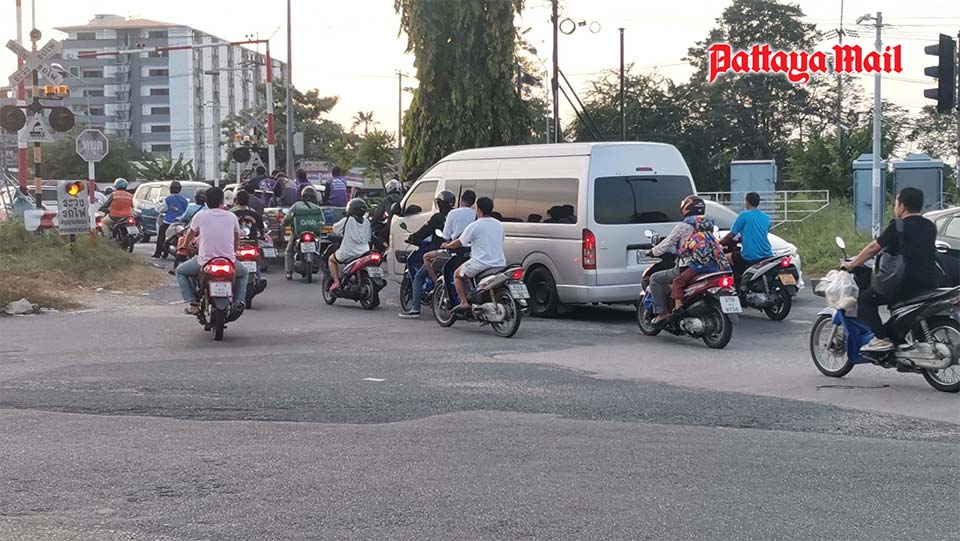
PATTAYA, Thailand – The Railway Road, a major route for commuters in Pattaya during rush hours, has long been plagued by heavy traffic. Despite years of efforts, the problem remains unresolved, with a high volume of vehicles causing significant congestion. The city had implemented traffic lights in the past, but they failed to effectively manage the flow of traffic due to mismatched signal timing and the high density of vehicles.
In an attempt to alleviate traffic, the Pattaya City administration collaborated with the State Railway of Thailand to lease a 19-kilometer stretch of Railway Road, both inbound and outbound, for a fee of 2-3 million Baht per year. This allowed the city to improve the road surface and provide an alternative route for drivers, easing traffic in the city center. Initial improvements were promising, leading to further plans to install traffic signals at all intersections along the road, with an investment of tens of millions of Baht. However, the signal system ultimately proved ineffective, as the timing did not match the traffic volume during peak hours, causing further delays.
To address the situation, Pattaya City officials commissioned engineers to study traffic patterns and make adjustments to the signal system. Despite these efforts, the mismatch between signal timing and traffic volume persisted, and the situation remained unresolved for several years.
In the face of this ongoing challenge, local police, municipal officers, and volunteers were enlisted to help manage traffic flow and enforce regulations during peak hours. Yet, the traffic situation remains problematic, with congestion worsening and road conditions deteriorating. These issues, while not directly impacting tourism, primarily affect local residents and workers who rely on this road daily. If left unaddressed, these problems may eventually harm Pattaya’s tourism industry, especially as future plans for high-speed rail projects to boost tourism could exacerbate the situation further.
The city’s failure to address these issues effectively raises concerns about its ability to manage the growing demand for infrastructure as Pattaya aims to become a major tourism hub within the Eastern Economic Corridor (EEC). Without prompt action, the situation could lead to a public perception of the city’s planning as lacking foresight and vision.










